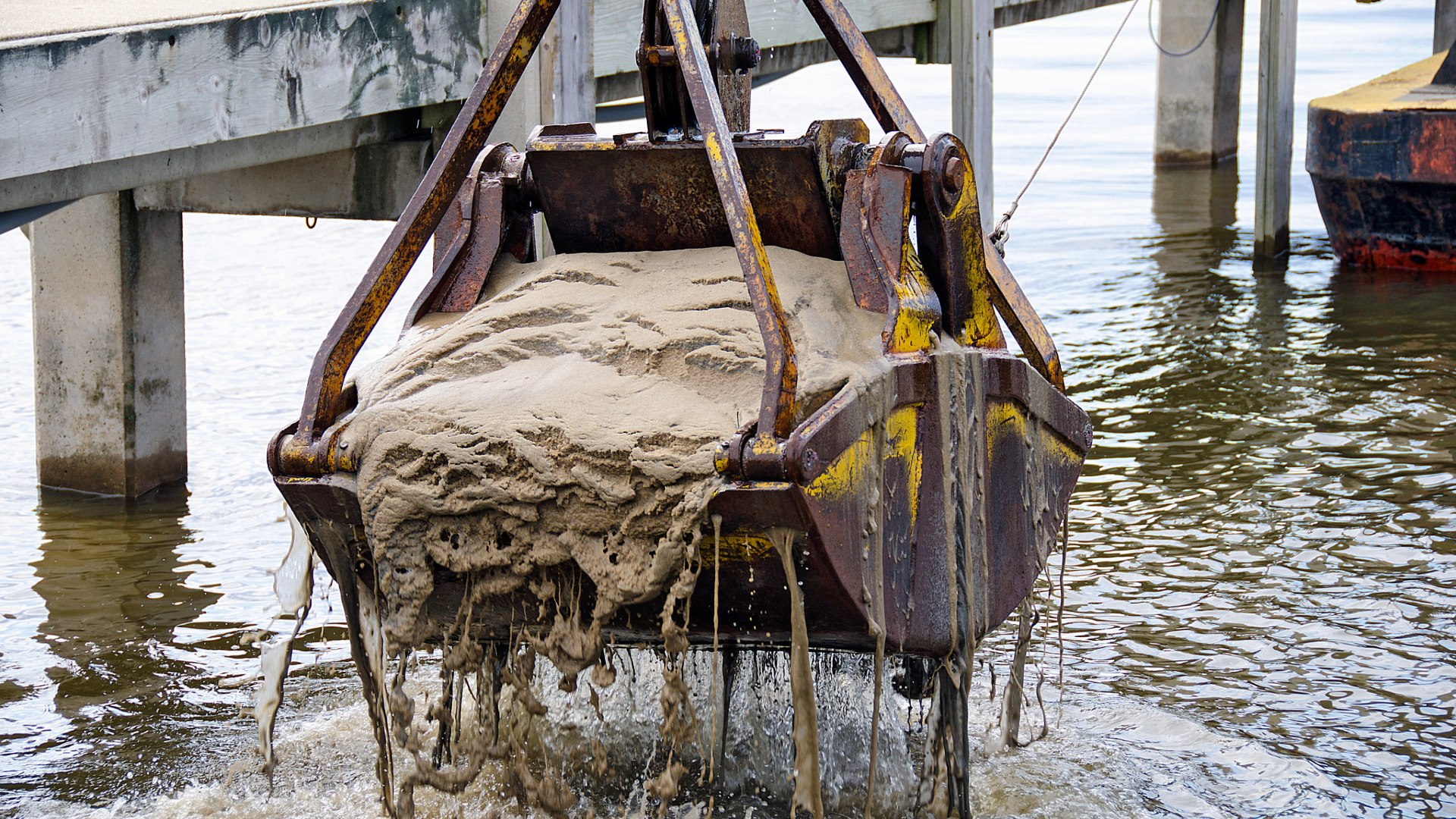
Introduction
Maintaining waterways in a functional and healthy state is crucial for both infrastructure and environmental protection. Rivers, lakes, and coastal zones collect sediment—sand, silt, and debris—that settles on the bottom, reducing depth, slowing flow, and harming ecosystems. Without action, these issues affect navigation, flood control, and water quality.
This is where dredging plays a key role. By clearing sediment, it restores depth, improves flow, and supports habitats. For anyone in marine or environmental work, understanding the dredging definition is essential.
The dredging definition refers to the controlled removal of underwater sediment using specialized machinery. It’s more than digging—it’s a regulated, engineered process involving planning, precision tools, and eco-friendly practices. Today, the dredging definition also encompasses sustainability and the reuse of sediment.
This guide explains the full dredging definition, types of equipment, techniques, and benefits when done responsibly. Whether for navigation or restoration, the dredging definition now applies across critical marine and ecological projects.
Understanding the dredging definition helps professionals execute tasks like trenching, harbor deepening, or beach nourishment, many of which require advanced pumping tools like those from Pump Enterprise.
As global trade and climate demands grow, dredging evolves. This guide helps define how and why the dredging definition remains central to modern waterway management.
What Is Dredging?
To understand the dredging definition, picture the process of clearing accumulated sediments—such as sand, silt, and debris—from the bottom of rivers, harbors, or other water bodies. This operation is central to the dredging definition, which encompasses both the removal of unwanted materials and the restoration of waterway functionality. It helps maintain or deepen aquatic areas to ensure smooth water flow and safe navigation for vessels.
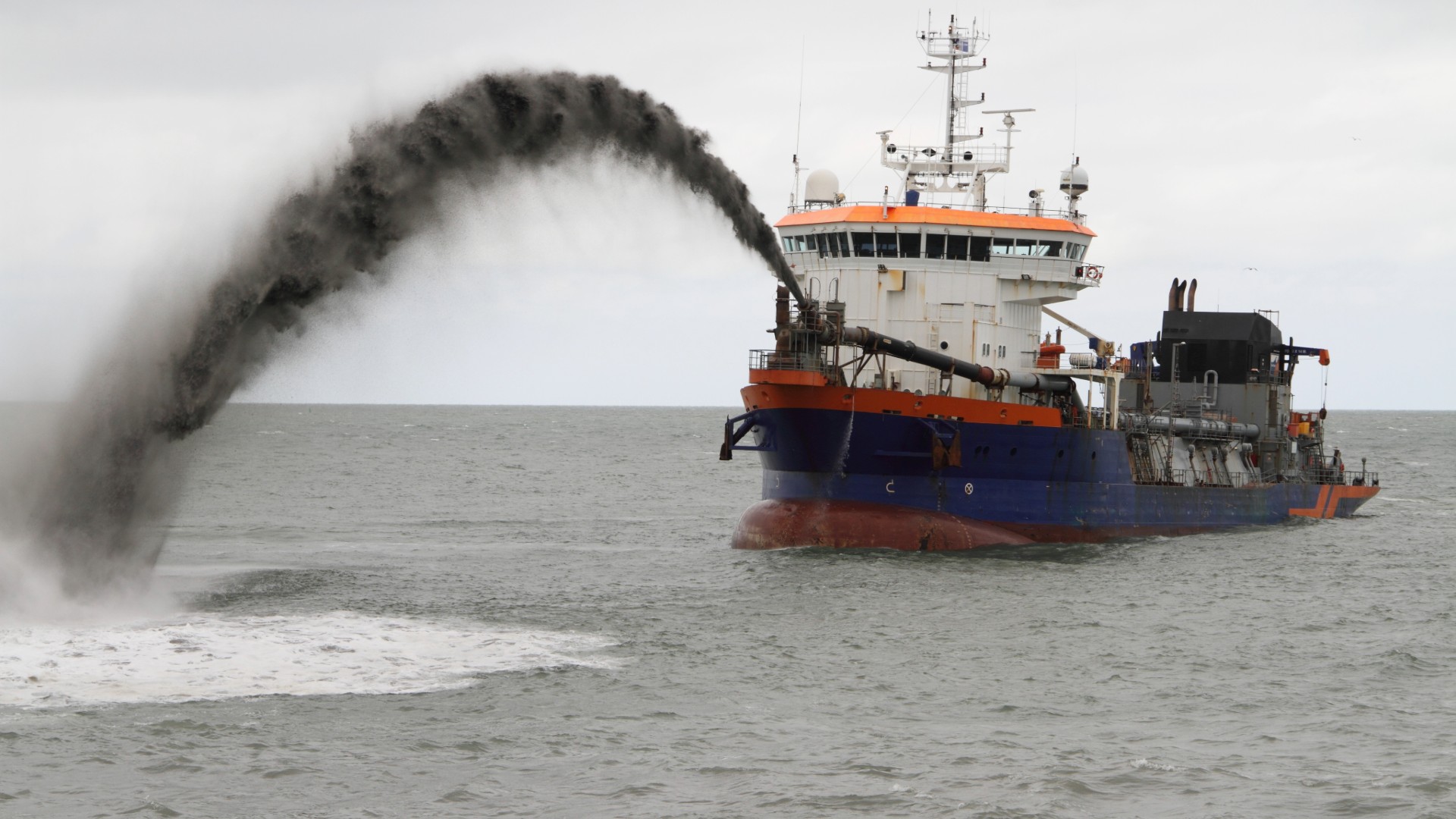
But the dredging definition extends beyond navigation. Dredging also plays a critical role in flood prevention, restoring aquatic ecosystems, and supporting maritime commerce and infrastructure development. Whether it’s an inland waterway or a major coastal port, dredging ensures that marine environments remain functional, safe, and ecologically balanced, making it a cornerstone of sustainable water management.
Dredges Definition: What Equipment Is Used?
To understand how dredging is accomplished, you also need to explore the dredges definition. A dredge is the machine or vessel used to carry out the dredging operation. These machines vary in size and complexity depending on the scope of the project.
There are several types of dredges, including:
- Cutter Suction Dredge (CSD): Uses a rotating cutter to loosen material and a suction pipe to transport the sediment.
- Trailing Suction Hopper Dredge (TSHD): Equipped with suction arms that collect sediment into onboard hoppers for later disposal.
- Clamshell Dredge: Utilizes a bucket system to scoop material from the bottom, ideal for confined or shallow areas.
- Backhoe Dredge: Similar to land-based backhoes but mounted on barges for underwater excavation.
The dredges definition refers not just to one machine, but a whole category of tools that can be mechanical or hydraulic. Each type of dredge has a specific application and efficiency profile.
How Dredging Works: Step-by-Step Process
The dredging definition doesn’t stop at excavation—it involves a well-structured process:
- Site Analysis: Engineers conduct a thorough study of the site to understand the type of sediment, its depth, environmental factors, and access logistics.
- Equipment Selection: Based on sediment and water conditions, the most suitable dredge is selected.
- Excavation: Sediments are loosened and removed using mechanical or hydraulic methods.
- Transport: The extracted material is either pumped through pipelines or transported via barges.
- Disposal or Reuse: Sediments are deposited in designated areas, reused for land reclamation, or treated for contamination.
- Post-Dredging Monitoring: Environmental compliance checks ensure minimal ecological disruption.
Understanding the full lifecycle involved in the dredging definition helps illustrate why it’s such a critical and carefully managed process.
Hydraulic Dredging Definition and Process
The hydraulic dredging definition refers to the use of high-powered pumps to remove sediment by converting it into a slurry and transporting it through pipelines. It is one of the most widely used methods in the broader dredging definition, which encompasses both mechanical and hydraulic approaches.
What Is the Hydraulic Dredging Definition?
In technical terms, the hydraulic dredging definition is:
“The use of centrifugal pumps to move sediment and water as slurry for efficient sediment transfer over distance.”
This method is effective, fast, and ideal for a wide range of aquatic environments. Within large-scale dredging projects, the hydraulic dredging definition represents a strategic solution for balancing performance with environmental care.
Where the Hydraulic Dredging Definition Applies
The hydraulic dredging definition is relevant in many types of projects, including:
- Beach replenishment
- Harbor and canal deepening
- Lake sediment cleanup
- Pipeline trenching
- Pond and wetland restoration
Each of these applications aligns with modern expectations of efficiency and ecological responsibility in dredging practices.
Key Benefits of Hydraulic Dredging
This method is preferred for:
- Handling soft sediment like silt or sand
- Working in shallow waters or marshes
- Low-impact, eco-sensitive operations
- Moving large volumes efficiently
As the industry becomes more sustainable, hydraulic dredging is evolving to incorporate cleaner pumps, greener operations, and advanced digital controls, thereby enhancing its value across environmental and infrastructure projects.
For top-tier equipment that fits the hydraulic dredging definition, check Pump Enterprise’s dredging solutions.
Mechanical vs. Hydraulic Dredging
Understanding the differences between dredging techniques is crucial for selecting the appropriate approach based on your project’s specific requirements.
Mechanical Dredging:
- Uses heavy equipment like clamshells, draglines, or backhoes
- Best suited for coarse materials such as gravel, cobble, or rock
- Preferred in confined or shallow areas where precision is crucial
Hydraulic Dredging:
- Relies on suction and slurry pipelines powered by centrifugal pumps
- Ideal for removing fine-grained sediments like silt or sand
- Designed for high-volume, continuous operations in open or sensitive environments
While both methods aim to remove sediment from water bodies, the best choice depends on factors such as the type of material, environmental sensitivity, project scale, and budget constraints.
Why Is Dredging Important?
Dredging plays a vital role in maintaining and improving aquatic environments, infrastructure, and urban resilience. Its applications extend well beyond sediment removal, covering critical functions that support safe navigation, flood control, ecological health, and land development. By exploring how dredging works, we better understand its place within the broader dredges definition used across engineering and environmental management.
1. Maritime Navigation
One of the most essential applications under the dredges definition is maritime transport. Over time, ports, harbors, and coastal shipping lanes accumulate sediment, gradually decreasing navigable depths. This poses serious risks to commercial shipping and can lead to costly disruptions in global logistics.
Dredging restores proper depth by clearing underwater obstructions, keeping shipping corridors safe and operational. Without routine maintenance, vessels could run aground, delay cargo deliveries, and cause economic setbacks. Within the context of navigation, dredging ensures the continuous flow of global trade and supports economic security.
2. Flood Control
Flood-prone areas depend heavily on the principles found within the dredges definition to manage excess water during heavy rainfall or storms. Rivers, drainage systems, and creeks lose capacity as silt and debris build up, increasing the risk of overflow.
By removing this sediment, dredging restores the natural flow and depth of water channels, reducing the likelihood of flash flooding. Municipalities, especially those with outdated stormwater infrastructure, rely on dredging as a preventive measure. It’s an essential part of modern flood management and an important strategy in climate resilience planning.
3. Environmental Restoration
A key part of the dredges definition includes ecological restoration. Wetlands, lakes, and riverbeds often become polluted with toxic sludge due to urban runoff or agricultural waste. This contamination harms aquatic life and disrupts ecosystems.
Environmental dredging targets these problem areas, removing harmful sediments while minimizing impact on surrounding wildlife. Specialized tools, such as silt curtains and low-turbidity cutterheads, are used to contain and control the operation. When conducted carefully, this method revitalizes habitats, improves water quality, and supports biodiversity.
Pump Enterprise offers advanced dewatering and sediment handling systems ideal for these high-precision, eco-conscious projects.
4. Land Reclamation and Development
The dredging definition also encompasses the expansion of usable land through reclamation. Coastal regions, industrial ports, and even island nations rely on dredging to transfer sediment from the seabed to shorelines, creating new land or elevating ground levels for infrastructure development.
This technique supports large-scale projects such as artificial islands, port expansions, and vital flood defenses. It also plays a key role in reinforcing coastlines against erosion and rising sea levels—issues that are becoming increasingly urgent in the context of climate change.
As urban density increases and space becomes increasingly limited, dredging assumes greater importance in promoting both sustainable growth and environmental resilience. Within the broader dredging definition, these reclamation efforts reflect a strategic use of marine engineering. Today, many governments and developers incorporate dredging into their long-term planning frameworks to secure land for housing, transportation networks, and climate adaptation initiatives.
Environmental and Regulatory Considerations
Although dredging is necessary, it’s essential to manage it responsibly. Any discussion of the dredging definition would be incomplete without acknowledging the potential environmental impact.
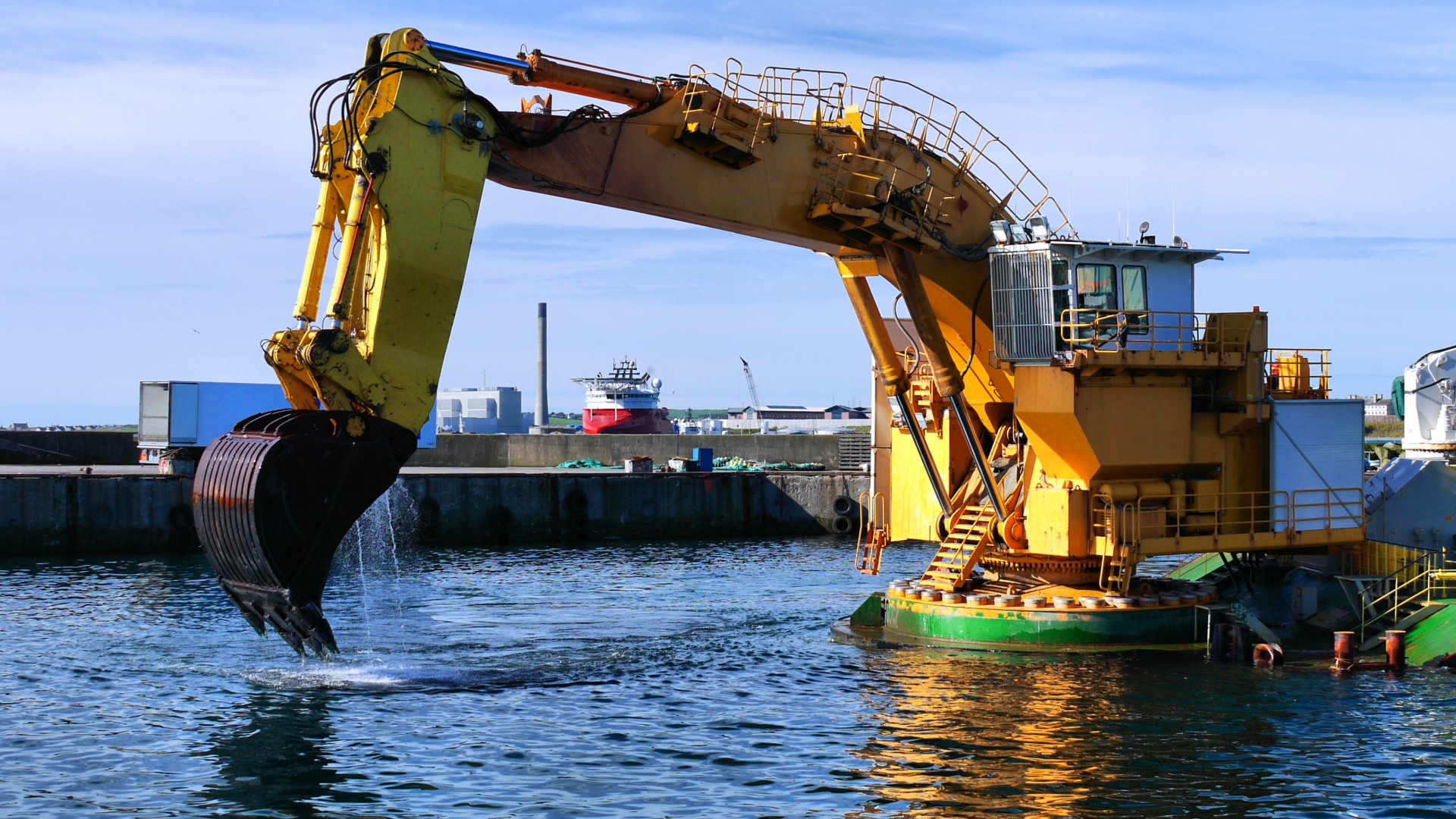
Potential Risks:
- Disturbance of aquatic life
- Increased turbidity
- Sediment plume spread
- Release of buried contaminants
Mitigation Measures:
- Silt curtains to contain turbidity
- Time restrictions to avoid breeding seasons
- Sediment testing before disposal
- Monitoring water quality during and after dredging
In most countries, regulatory bodies require Environmental Impact Assessments (EIA) and permits before dredging begins. Sustainable dredging practices are becoming central to modern interpretations of the dredging definition.
Real-World Applications and Case Studies
Understanding how the dredging definition translates into real-world success stories provides practical insight:
Port of Rotterdam
Europe’s busiest port undergoes regular maintenance dredging to accommodate large cargo ships. Without dredging, trade throughput would slow drastically.
Mississippi River Flood Control
The U.S. Army Corps of Engineers regularly dredges the Mississippi to control flooding and maintain shipping lanes—an excellent application of both the dredging definition and flood risk management.
Beach Nourishment in Florida
Hydraulic dredging is used to pump sand back onto eroding beaches, preserving coastal infrastructure and tourism economies. This is a classic case of applying the hydraulic dredging definition to environmental goals.
The Future of Dredging: Technology and Innovation
A global push toward sustainability, automation, and smart infrastructure is reshaping the future of dredging. As equipment and practices evolve, so too does the dredges definition, now encompassing advanced technologies that prioritize efficiency, safety, and environmental protection.
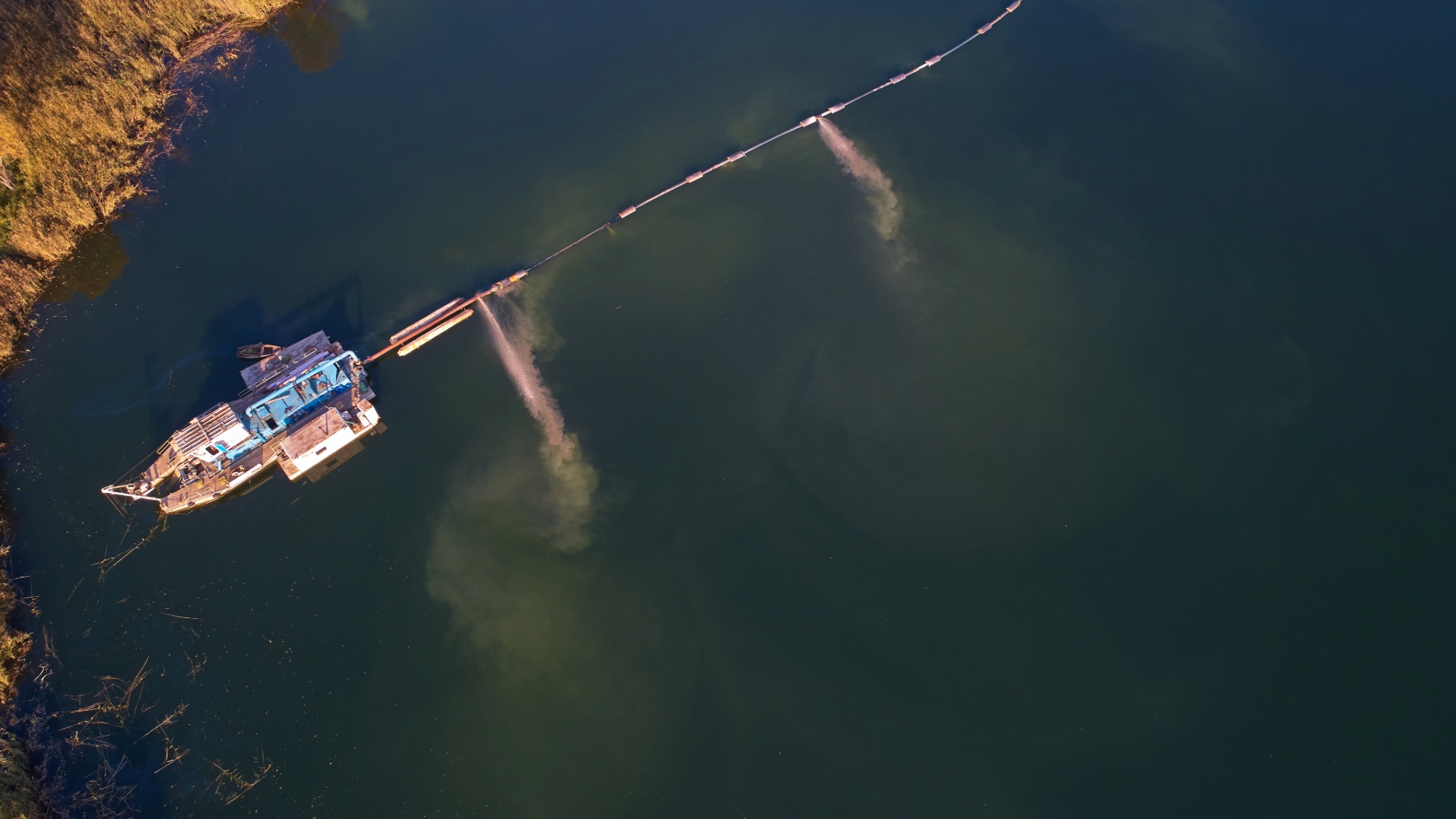
Key Innovations Reflecting the Modern Dredges Definition
GPS-Guided Systems
Today’s dredging projects increasingly rely on GPS guidance to ensure precise sediment removal. This high level of accuracy minimizes environmental disruption and reduces material over-removal, reflecting a more sophisticated interpretation of the dredges definition—one that values precision and accountability.
Real-Time Monitoring
Advanced sensors and digital monitoring systems provide continuous data on sediment composition, flow rates, and the dredger’s performance. Operators can make informed decisions instantly, aligning operations with the real-time demands of the site. This integration of smart tech expands the dredges definition to include data-driven operations.
Autonomous and Remote-Controlled Dredgers
Artificial intelligence and remote-control capabilities are revolutionizing the operation of dredgers. These innovations reduce human exposure to hazardous environments and increase operational efficiency. Within the dredges definition, this marks a shift toward automation and machine-led project management.
Eco-Friendly Equipment
Sustainable tools such as electric-powered dredgers, low-emission pumps, and biodegradable hydraulic fluids are becoming industry standards. These environmentally conscious solutions push the dredges definition to encompass green technology and minimal ecological impact.
As infrastructure demands grow and environmental regulations tighten, the dredges definition will continue to expand. From smart dredging systems to AI-integrated controls, the future points toward a more intelligent, adaptive, and sustainable approach.
For advanced, energy-efficient dredging systems that meet the modern dredges definition, explore the innovative equipment solutions offered by Pump Enterprise.
Conclusion
Dredging is far more than just digging underwater. As this guide has shown, the dredging definition encompasses a wide range of processes, equipment types, environmental goals, and industrial applications. Whether it’s maintaining navigation channels, restoring wetlands, preventing floods, or enabling land development, dredging remains essential to both environmental protection and infrastructure expansion.
Understanding the dredging definition provides valuable insight into how this field has evolved, from basic manual methods to advanced, technology-driven operations. Today, the term includes mechanical excavation, sustainable sediment management, and eco-sensitive restoration techniques.
From mastering the dredging definition to appreciating its role in modern engineering, professionals and newcomers alike gain a clear foundation for how dredging impacts global trade, environmental health, and urban planning. As technology and sustainability continue to shape future practices, the dredging definition will only grow to include smarter, cleaner, and more efficient methods for managing the world’s waterways.

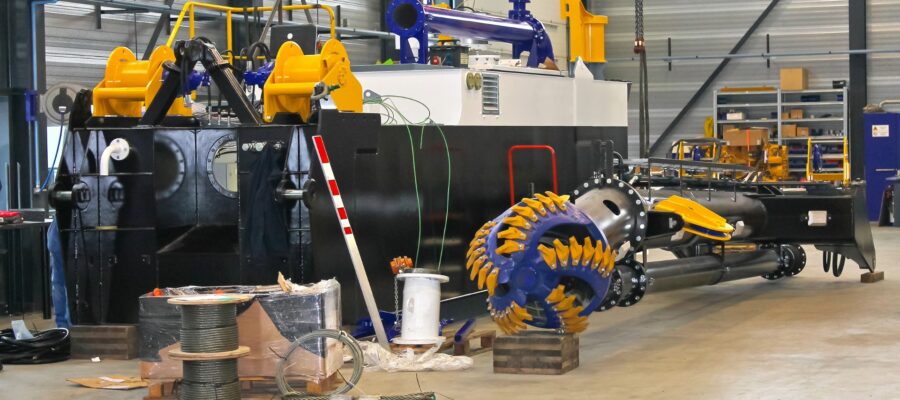

Post a Comment